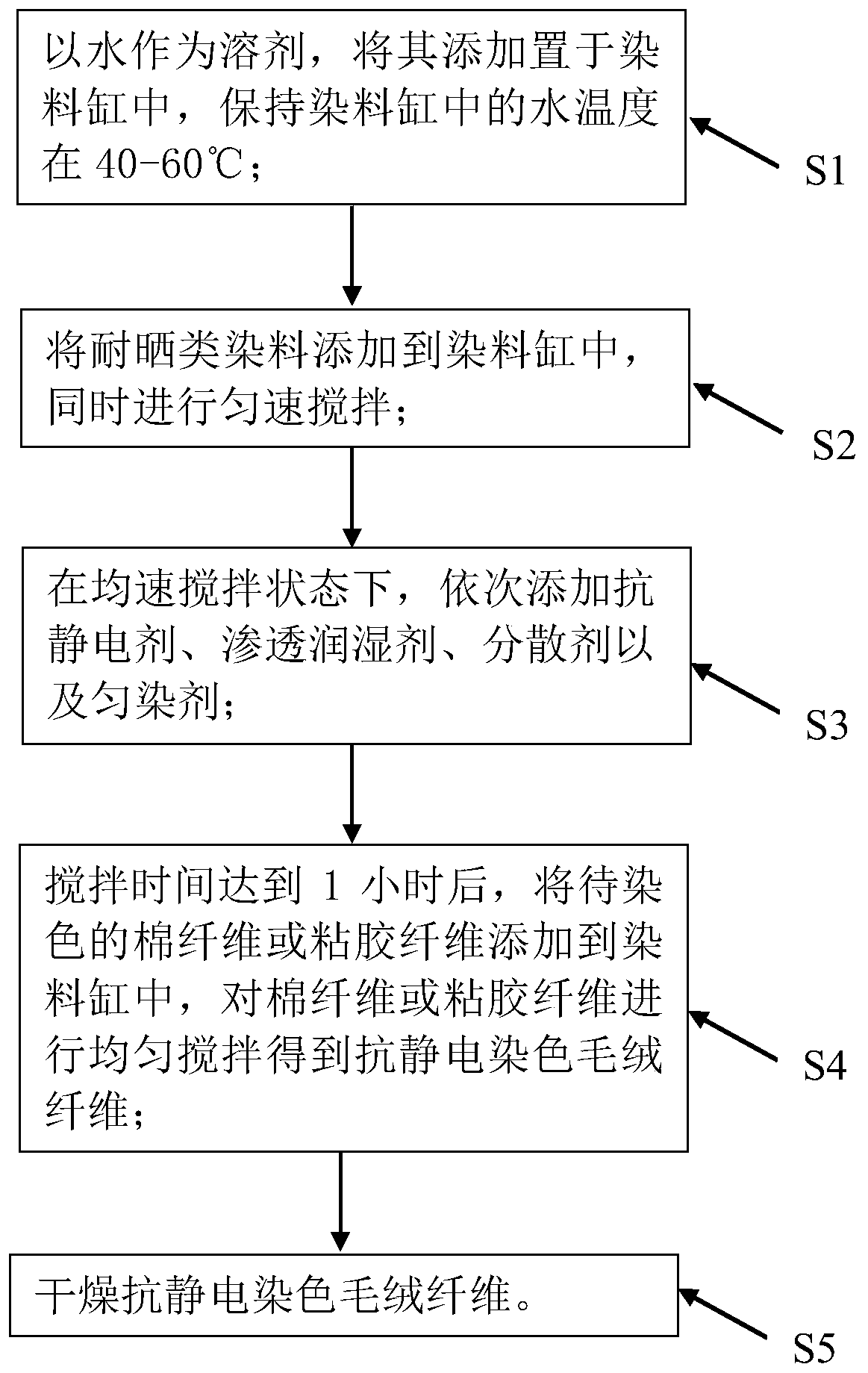Antistatic plush fabric
An anti-static and anti-static agent technology, applied in the field of knitted fabrics, can solve the problems of loss of anti-static ability, complicated modification process, color limitation of conductive filaments, etc.
- Summary
- Abstract
- Description
- Claims
- Application Information
AI Technical Summary
Problems solved by technology
Method used
Image
Examples
Embodiment 1
[0024] Embodiment 1: An antistatic plush fabric, its raw material includes cotton fiber, antistatic agent, osmotic wetting agent, dispersant and leveling agent are added in the dyeing solution, wherein, the dyestuff in the dyeing solution is light-fast dye, and the antistatic agent adopts a light stabilizer compatible with light-fast dyes, preferably, the light stabilizer adopts a hindered amine light stabilizer (commercially available), and the hindered amine light stabilizer is the weight of the light-fast dye The penetrating wetting agent is selected from the mixture of Swire oil and wax powder, the dispersant is a dispersant of formaldehyde sulfonic acid, and the leveling agent is a mixture of sodium alkylsulfonate and quaternary ammonium salt surfactant. .
[0025] Preferably, see further figure 1 Shown, the operating steps of present embodiment 1 dyeing process comprises:
[0026] S1), using water as a solvent, adding it to the dye vat, keeping the temperature of the w...
Embodiment 2
[0032] Embodiment 2: The remaining technical solutions of this embodiment 2 are the same as those of Embodiment 1, the difference is that: this embodiment 2 proposes an antistatic plush fabric, the raw material of which includes viscose fiber, and the hindered amine light stabilizer is light-fast The weight ratio of the dye is 3 times, the penetrating wetting agent is selected from the mixture of Taikoo oil and pull-off powder, and the leveling agent is a mixture of higher fatty alcohol sulfate sodium salt and quaternary ammonium salt surfactant.
PUM
 Login to View More
Login to View More Abstract
Description
Claims
Application Information
 Login to View More
Login to View More - R&D
- Intellectual Property
- Life Sciences
- Materials
- Tech Scout
- Unparalleled Data Quality
- Higher Quality Content
- 60% Fewer Hallucinations
Browse by: Latest US Patents, China's latest patents, Technical Efficacy Thesaurus, Application Domain, Technology Topic, Popular Technical Reports.
© 2025 PatSnap. All rights reserved.Legal|Privacy policy|Modern Slavery Act Transparency Statement|Sitemap|About US| Contact US: help@patsnap.com

